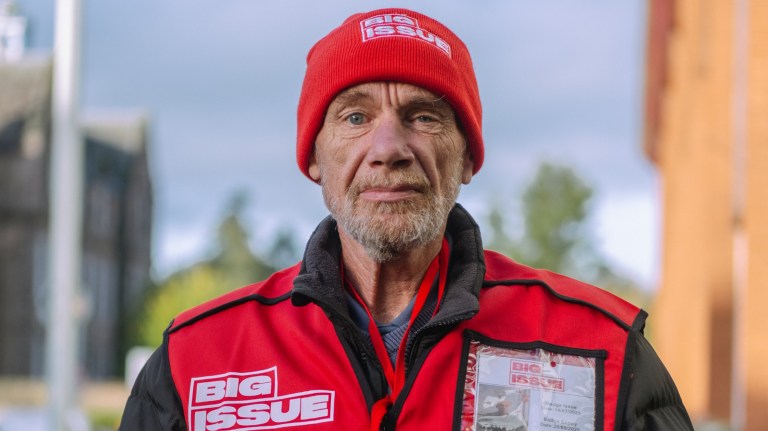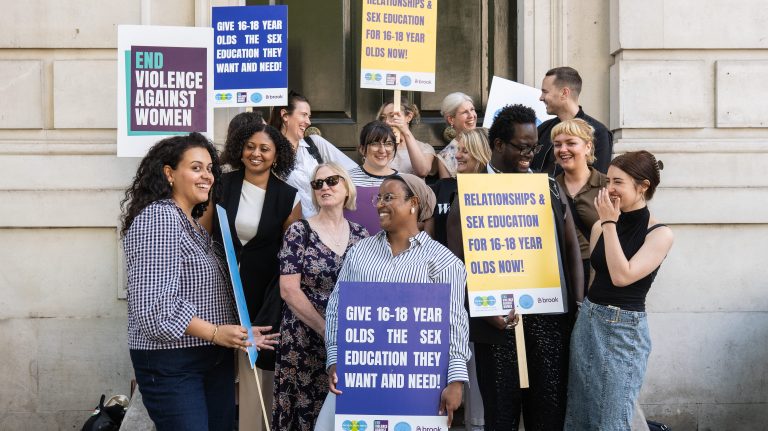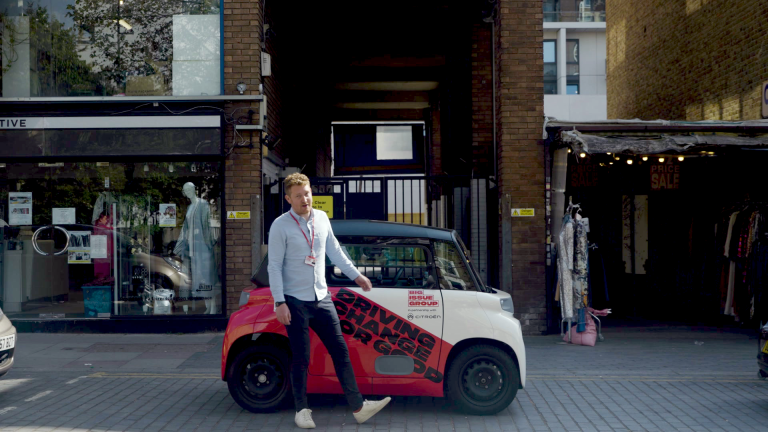Big Issue has reported extensively on calls to scrap the two-child limit and, as pressure builds ahead of the Autumn Statement, we will continue platform the voices of families most impacted by the policy and put them at the heart of the conversation.
But what exactly is the two-child limit on benefits? Who is impacted by it? Why do charities want the two-child limit to be scrapped? How much would it cost the government to remove it – and what would it cost to keep it? And how is it different from the benefit cap?
We explain all you need to know with insights from experts.
What is the two-child benefit cap?
The two-child limit on benefits means that families claiming universal credit or child tax credit do not receive additional amounts for their third child or subsequent children born after 5 April 2017.
Families typically receive an additional £3,513.72 per year in universal credit or child tax credit for their children born on or after 6 April 2017 – but third and subsequent children born after this date are denied any extra support.
The latest news on the two-child benefit cap
In October, it was reported that the Labour government is planning to end the two-child limit on benefits, potentially replacing it with a tapered system, meaning financial support for larger families may remain capped.
Advertising helps fund Big Issue’s mission to end poverty
The details have not yet been officially announced, but it is expected that chancellor Rachel Reeves will set out the plans in her Autumn Statement at the end of November.
According to reports, the Treasury is believed to be considering options to replace the two-child benefit cap, such as a three or four-child limit on benefits, or introducing a taper system so parents get more for their first child, and less for any subsequent children.
While charities have welcomed the news that the two-child benefit cap could be replaced, experts have cautioned against “watering down” policy to prevent child poverty.
“While details of the tapering are yet to be confirmed, we would warn against any system which does not have the complete eradication of child poverty as its sole principle,” Mark Rowland, chief executive at Mental Health Foundation, told the Big Issue when the reports were first announced. “Anything less will be a dereliction of duty.”
How many people are impacted by the two-child limit?
Around 470,000 families across the UK are impacted by the two-child benefit cap, official figures from the DWP released in April 2025 show.
It means that 1.6 million children are affected by the two-child limit compared with families whose kids were born sooner.
Advertising helps fund Big Issue’s mission to end poverty
Who is exempt from the two-child benefit cap?
There are some exceptions to the two-child limit on benefits. You can get extra universal credit for your third child and subsequent children if they were born as part of a multiple birth (such as twins or triplets), except for one child in that birth. For example, if you already have two children and then have twins, the DWP will pay for one of those twins.
Since November 2018, children who are adopted or being cared for by friend or family carers may also be eligible for an exemption from the two-child limit on benefits.
Additionally, children who have been conceived as a result of a non-consensual sexual act – including rape or at a time when the claimant was subject to ongoing control or coercion by the other biological parent – can also get additional universal credit for their third or subsequent children.
If a child under 16 becomes a parent, and you are now responsible for both the baby and their parent, you’ll continue to get the additional amount of benefit until the young parent is aged 16 and able to claim universal credit themselves, or they leave your household.
You can find out more information about whether your child could be exempt on the government’s website.
Why was the two-child benefit limit introduced?
The two-child limit on benefits was introduced by Conservative chancellor George Osborne in his Budget following the 2015 general election.
Advertising helps fund Big Issue’s mission to end poverty
The government at the time claimed it was to ensure that households on means-tested benefits would “face the same financial choices about having children as those supporting themselves solely through work”.
Essentially, it was a policy designed to incentivise benefit claimants into work – saving the government money on the welfare bill and through more tax raised through people working.
The Labour government has since said it will “consider” scrapping the two-child benefit limit as part of its mission to reduce child poverty, with reports that the policy could be replaced as part of the Autumn Statement.
Education secretary Bridget Phillipson has stressed that scrapping the policy comes with a “significant price tag”, while chancellor Rachel Reeves said when Labour came to power in 2024 that the government would have to make “difficult decisions” over welfare spending due to a £20bn “black hole” in public finances left behind by the Tories.
How much would it cost to scrap the two-child benefit cap?
Abolishing the two-child limit would cost the government £3.5bn in 2029 to 2030, according to estimates from the Resolution Foundation. It rises to an estimated £4.5 billion if the benefit cap is also scrapped.
But that’s about 1% of the total welfare bill and would mean savings for public services and a boost for the economy in the long term. The long-term costs to society of entrenched child poverty are “staggering” at around £39bn annually, according to the Child Poverty Action Group (CPAG).
Advertising helps fund Big Issue’s mission to end poverty
Forecasts of a continued rise in child poverty mean that the cost is set to increase to more than £40bn by 2027.
Why do people want the two-child benefit limit to be scrapped?
It is estimated that at least 350,000 children would be lifted immediately out of poverty, and a further 700,000 children would be in less deep poverty, according to the CPAG.
The Resolution Foundation goes further and suggests that 490,000 children could be lifted out of poverty.
Families have told Big Issue how it has made them feel “stressed” and as though they will be forced to “suffer for the rest of their lives” because they had more than two children.
“Would you really plan your family around government policy?” one mother said.
Another mum said that she feared telling the DWP she was pregnant with her third child because of the two-child benefit limit.
Advertising helps fund Big Issue’s mission to end poverty
Becca Lyon, the head of child poverty at Save the Children UK, described the limit as “one of the cruellest welfare rules of the past decade”.
It means families have less money for food, children’s clothes, toys and books, and being able to travel to nearby activities and experiences.
Lynn Perry, the chief executive of Barnardo’s, said: “It almost acts like a sibling penalty. There’s no other area of policy where we wouldn’t provide for the third or subsequent child.
“We wouldn’t see that in education or health services, or any other area of policy that affects children. It creates real pressures within families.”
Does the two-child limit on benefits push people into employment?
Studies suggest that the two-child limit on benefits is not effective at incentivising people into work.
Employment rates among larger low-income families have not significantly changed since the policy was introduced, according to a House of Commons research briefing.
Advertising helps fund Big Issue’s mission to end poverty
A report from Dr Kitty Stewart at the London School of Economics found that the two-child benefit cap had had “no impact at all” on employment rates, or on work hours.
Around 57% of families impacted by the two-child limit on benefits already have at least one parent in work, HMRC figures show.
Many parents impacted by the two-child limit have health conditions which prevent them from working, or they are single parents and struggle to balance childcare responsibilities alongside work.
There has also not been a significant decrease in the number of babies born as a result of the two-child limit.
Can you claim child benefit for your third and subsequent children?
The two-child limit on benefits does not apply to child benefit. You can claim child benefit for your third child and any subsequent children. There is no limit on the number of children for whom you can claim child benefit.
What is the benefit cap?
The benefit cap is a different and separate policy from the two-child limit on benefits.
Advertising helps fund Big Issue’s mission to end poverty
It was introduced by George Osborne when he was chancellor in 2013 as an attempt to incentivise benefit claimants into work.
It means that working-age families can only receive a certain amount of state support, including housing benefit, without being employed. That limit is £25,323 in London, and £22,020 outside the capital.
It applies to working-age families who are out of work, or who are earning less than the equivalent of 16 hours per week at the minimum wage.
There are 115,000 households who are impacted by the benefit cap, according to the latest DWP figures. Much like the two-child limit on benefits, it is leading to poverty and destitution, particularly among large families and single parents.
Dr Mark Fransham, a social data scientist, said: “There has been lots of discussion about removing the two-child limit in recent weeks and while that is important it would not help these families – the benefit cap policy needs addressing if we are to deal with the spectre of destitution in the UK.”
Do you have a story to tell or opinions to share about this? Get in touch and tell us more.
Advertising helps fund Big Issue’s mission to end poverty
Reader-funded since 1991 – Big Issue brings you trustworthy journalism that drives real change.
Every day, our journalists dig deeper, speaking up for those society overlooks.
Could you help us keep doing this vital work? Support our journalism from £5 a month.









